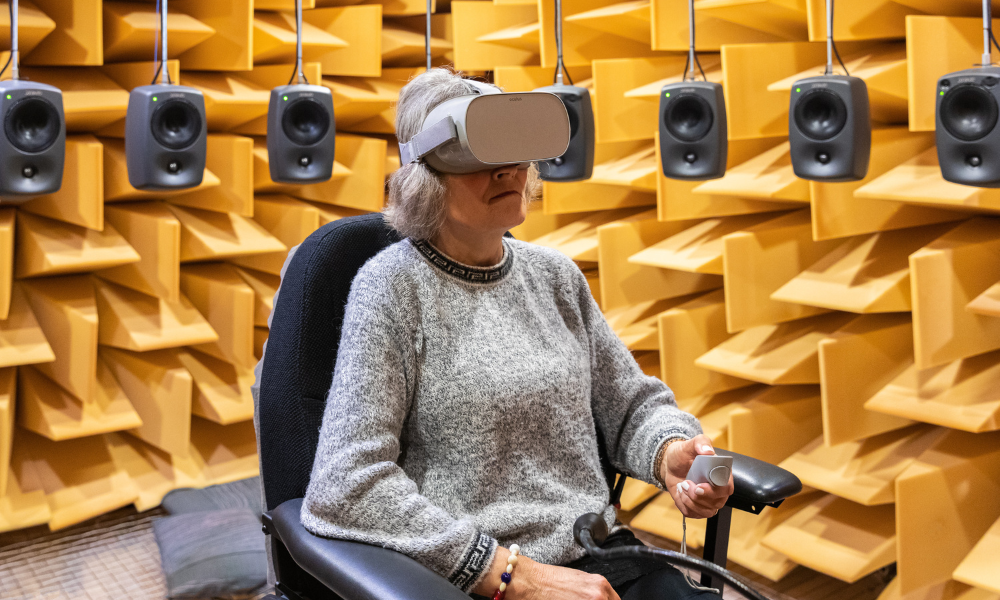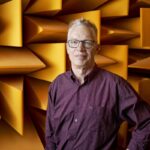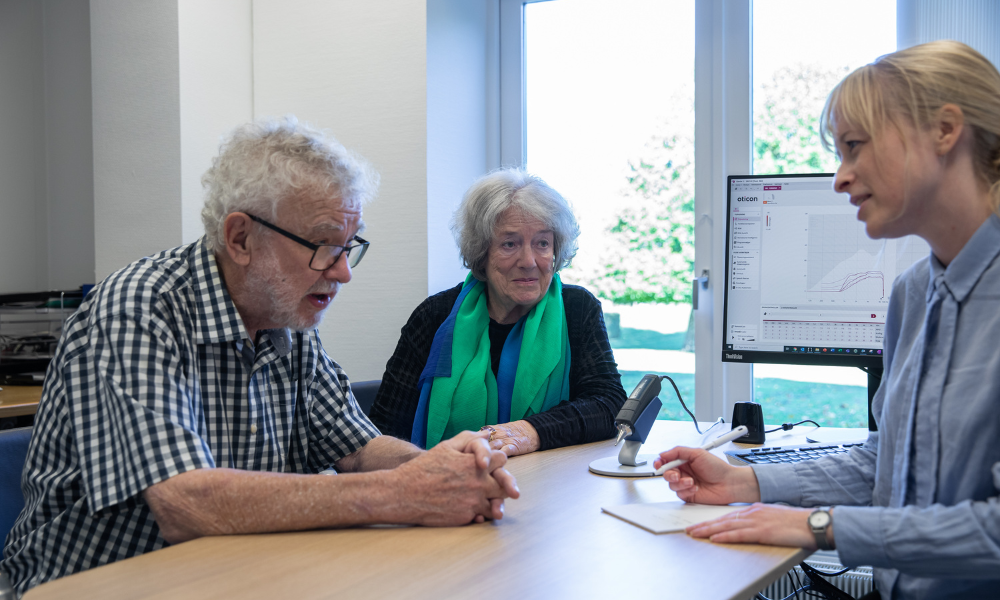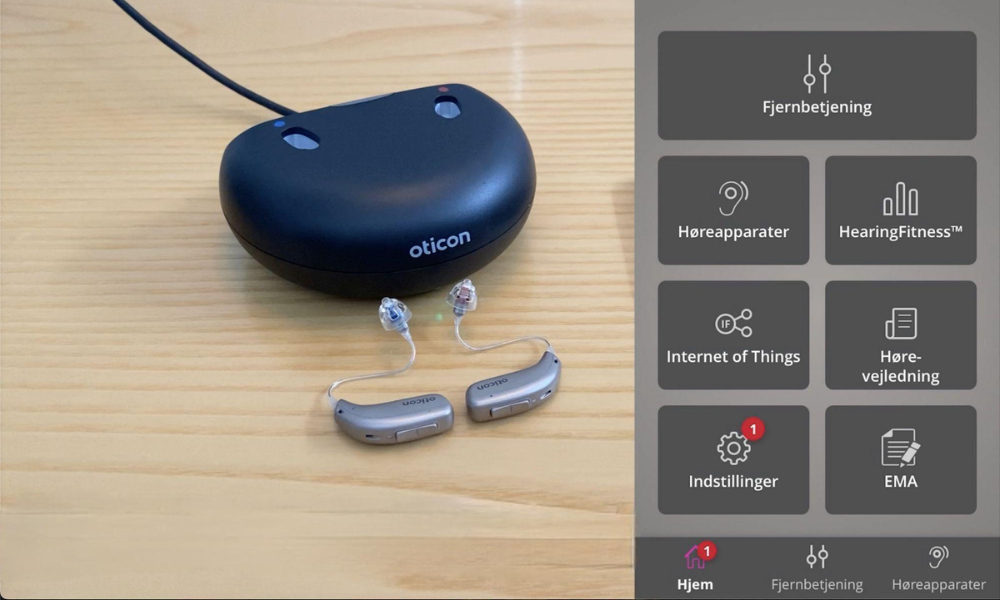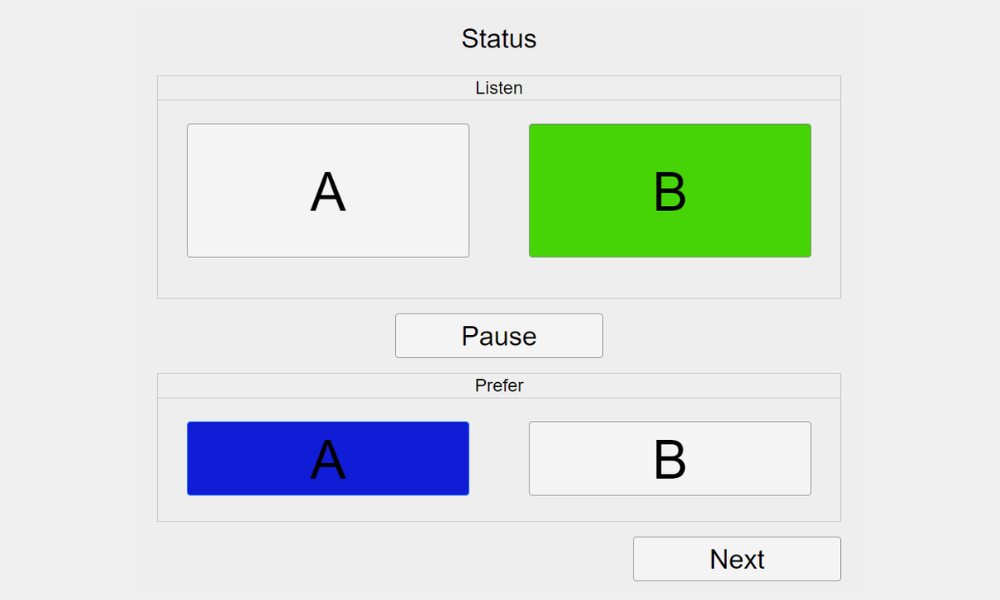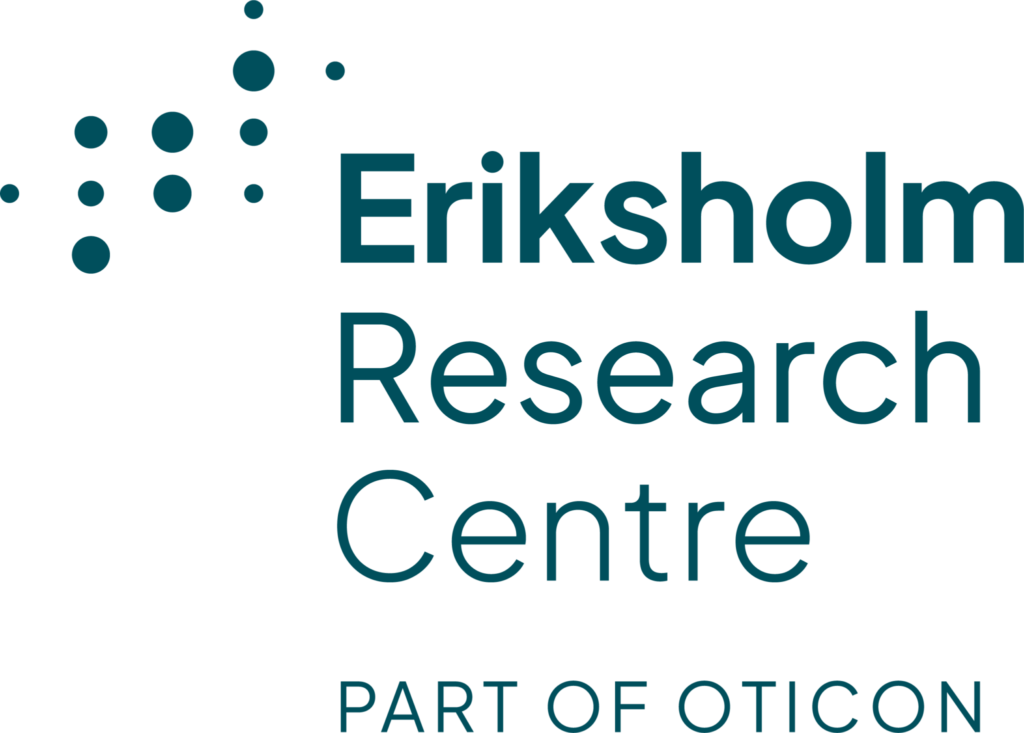Introduction
While hearing aid users often have their devices fine-tuned in the clinic, the range of clinical benefits from hearing aid features are not fully known. This project aims to examine the effectiveness of these popular hearing aid features in laboratory testing, utilizing multiple outcome measures. Additionally, this project seeks to explore the effect of user behavior on these benefits by implementing twin lab tests—one using audio-only stimuli, and the other using audiovisual stimuli.
Aims
This project aims to highlight the importance of individualized fitting by exploring the clinical benefits of these hearing aid features. The primary objective is to determine the best combination of features for hearing aid users to maximize the balance between intelligibility and effort – two primary components contributing to hearing satisfaction. The second objective is to understand the impact of user behavior on these benefits, in order to make the fitting process more ecologically valid.
Head and Torso Simulator taking the place of a test person in the anechoic room experiencing the sound field from the loudspeaker ring and the visual stimuli from the virtual-reality headset. The wearer could move the head and get a synchronized audiovisual experience during the test.
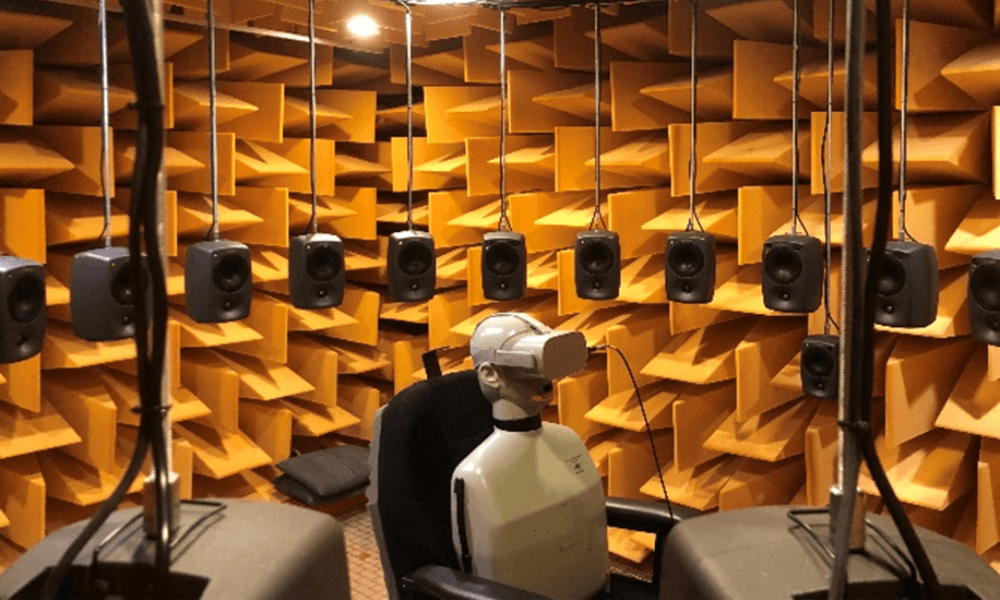
Methodology
The effectiveness of the hearing aid features is tested in two different laboratory settings. The audio-only test will utilize a traditional speech-in-noise test, in which the intelligibility, subjective assessment, and pupil response are considered as the outcome measures. For the audiovisual test, we will use a combination of augmented virtual reality and a loudspeaker array, with outcome measures of intelligibility, questionnaires, and cardiovascular measures.
Results
Our preliminary results indicate that fine-tuning of hearing aid features can enhance the balance between intelligibility and effort, thus improving hearing satisfaction. Furthermore, our findings suggest that user behavior can significantly influence the benefits of Noise Reduction.



